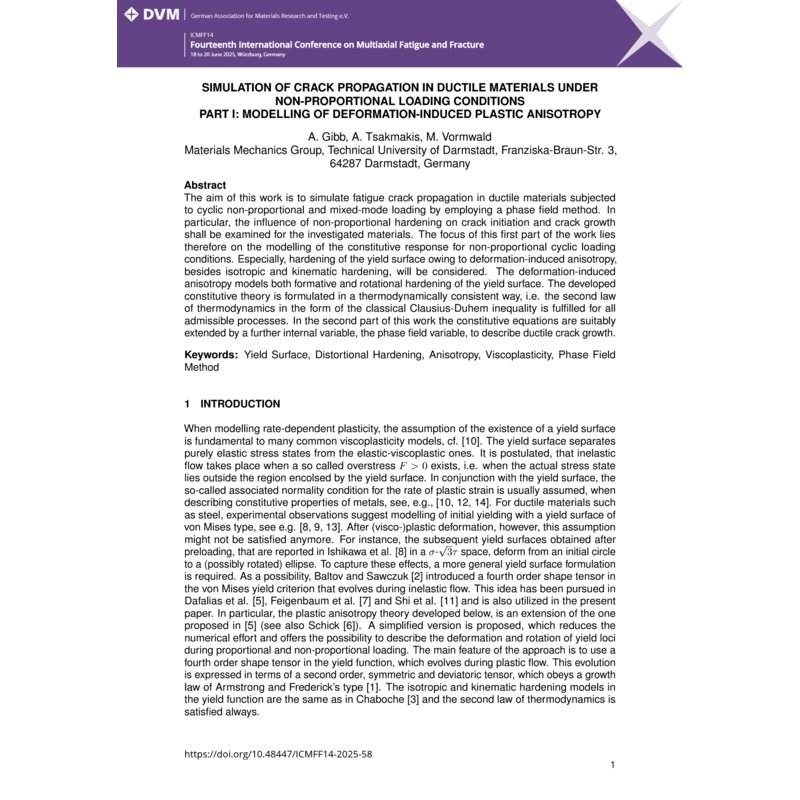- Nur online erhältlich



The aim of this research is to simulate fatigue crack propagation in ductile materials subjected to cyclic non-proportional and mixed-mode loading by means of the phase field method. For the investigated materials, it is to be expected that non-proportional hardening has a major influence on the crack initiation and further evolution.
The focus of this first part of the work relies therefore on the modelling of the constitutive response for non-proportional cyclic loading conditions. To this end, isotropic and kinematic hardening and a deformation-induced change in the plastic flow are the hardening mechanisms considered here. The latter includes both a formative and a rotational change of the yield surface. A first attempt to model such a material behaviour was undertaken in…

Datenschutzbedingungen (bearbeiten im Modul "Kundenvorteile")

Lieferbedingungen (bearbeiten im Modul "Kundenvorteile")

Rücksendebedingungen (bearbeiten im Modul "Kundenvorteile")
The aim of this research is to simulate fatigue crack propagation in ductile materials subjected to cyclic non-proportional and mixed-mode loading by means of the phase field method. For the investigated materials, it is to be expected that non-proportional hardening has a major influence on the crack initiation and further evolution.
The focus of this first part of the work relies therefore on the modelling of the constitutive response for non-proportional cyclic loading conditions. To this end, isotropic and kinematic hardening and a deformation-induced change in the plastic flow are the hardening mechanisms considered here. The latter includes both a formative and a rotational change of the yield surface. A first attempt to model such a material behaviour was undertaken in Dafalias et al. [1] and further developed in Feigenbaum et al. [2]. The entire model is formulated in a thermodynamically consistent way, i.e. the second law of thermodynamics in the form of the classical Clausius-Duhem inequality is fulfilled for all permissible processes.
In the second part of this work the constitutive equations are suitably extended by a further internal variable, the phase field variable, to describe ductile crack growth.